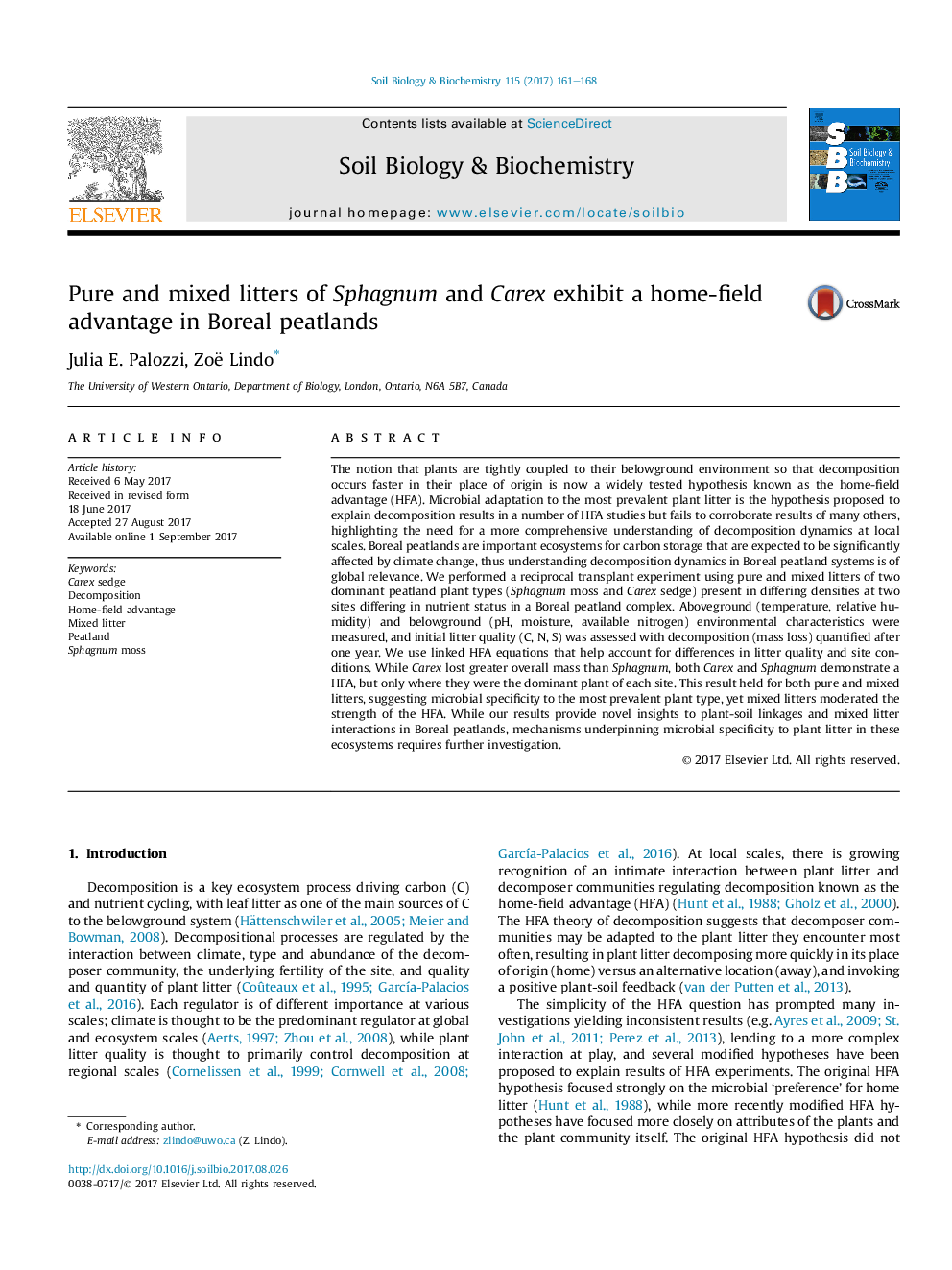| کد مقاله | کد نشریه | سال انتشار | مقاله انگلیسی | نسخه تمام متن |
|---|---|---|---|---|
| 5516237 | 1542569 | 2017 | 8 صفحه PDF | دانلود رایگان |

- Home-field advantage was observed for the dominant plant of each site.
- Litter quality did not explain the home-field advantage in pure litters.
- Both synergistic and antagonistic effects were observed in mixed litters.
- Our results suggest local adaptation of the microbial communities to litter quality.
The notion that plants are tightly coupled to their belowground environment so that decomposition occurs faster in their place of origin is now a widely tested hypothesis known as the home-field advantage (HFA). Microbial adaptation to the most prevalent plant litter is the hypothesis proposed to explain decomposition results in a number of HFA studies but fails to corroborate results of many others, highlighting the need for a more comprehensive understanding of decomposition dynamics at local scales. Boreal peatlands are important ecosystems for carbon storage that are expected to be significantly affected by climate change, thus understanding decomposition dynamics in Boreal peatland systems is of global relevance. We performed a reciprocal transplant experiment using pure and mixed litters of two dominant peatland plant types (Sphagnum moss and Carex sedge) present in differing densities at two sites differing in nutrient status in a Boreal peatland complex. Aboveground (temperature, relative humidity) and belowground (pH, moisture, available nitrogen) environmental characteristics were measured, and initial litter quality (C, N, S) was assessed with decomposition (mass loss) quantified after one year. We use linked HFA equations that help account for differences in litter quality and site conditions. While Carex lost greater overall mass than Sphagnum, both Carex and Sphagnum demonstrate a HFA, but only where they were the dominant plant of each site. This result held for both pure and mixed litters, suggesting microbial specificity to the most prevalent plant type, yet mixed litters moderated the strength of the HFA. While our results provide novel insights to plant-soil linkages and mixed litter interactions in Boreal peatlands, mechanisms underpinning microbial specificity to plant litter in these ecosystems requires further investigation.
Journal: Soil Biology and Biochemistry - Volume 115, December 2017, Pages 161-168